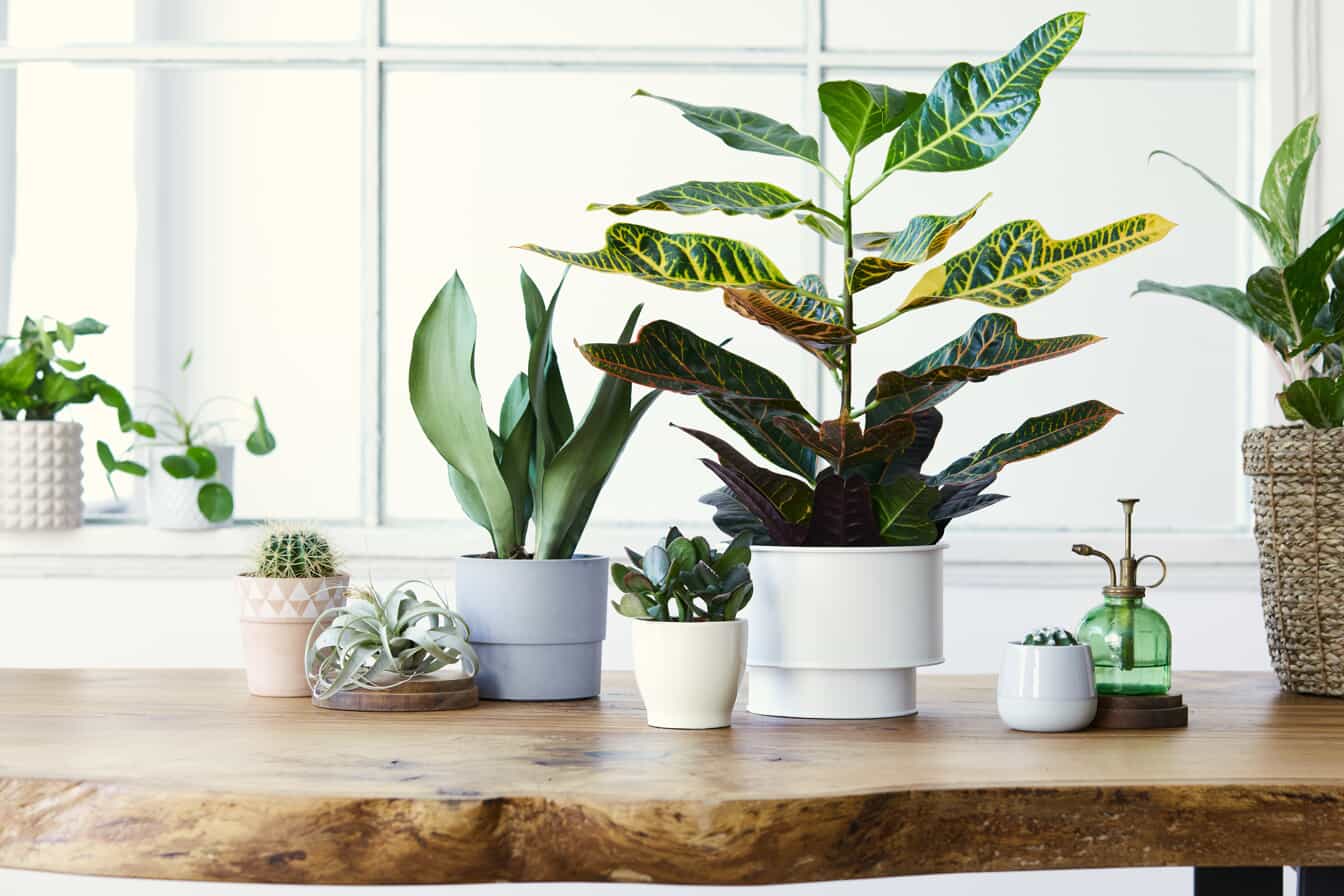10 Unique Items You Can Wash in the Washing Machine (Besides Clothes)
Let’s face it; if you had to hand wash every single thing you knew needed a good cleaning, there’d never be enough time for anything else! Fortunately, there are a variety of items, besides clothes, you can throw into the washing machine. With so much on your plate already, the convenience of quickly cleaning unique household items with zero fuss is the timesaver you need in your life.
Our cleaning experts at Merry Maids® have your guide to surprising items around your home you didn’t know your washing machine could take care of for you.
1. Small Rugs
With the amount of foot traffic in and out of your home, your small rugs are probably in need of some attention. Some rugs in your home will have varied cleaning specifications depending on the material and textures. However, generally, it’s safe to include a machine-washable throw rug or runner with a load of laundry once a month.
Consider These Tips Before Washing
Shake out the rug to remove small pebbles, clumps of dirt, etc.
Vacuum the rug to remove any remaining dirt and debris.
Spot-treat any hard-to-remove stains.
Remember, wash with like colors (as much as possible) in cold water, and air dry. For rugs with a rubber backing, avoid excessive washing, as it can cause damage to the material.
2. Bed Pillows
Have you been throwing out pillows with stains, convinced there’s no way to salvage them, and then purchasing new ones? Well, we’ve got a money saver for you! You don’t have to get rid of dirty bed pillows. You can throw them in the wash (unless the label specifies “dry clean only”). Ideally, this should be done at least every six months.
Consider These Tips Before Washing
Remove the pillowcase (if possible) and wash it separately.
Use baking soda for stains that are harder to remove.
Pillows are not created equally, and neither is the stuffing. Depending on the type of material inside the pillow, you’ll have to tailor your washing routine.
Down or feather: Avoid using a liquid detergent, as it can create a residue if not rinsed thoroughly. It’s best to use a little bit of powder detergent and wash in warm water on a delicate cycle.
Polyester: Pillows made of polyester should be washed in warm water on a delicate cycle. Liquid detergent is okay, but use it sparingly. 1 tablespoon of liquid soap should do the trick.
Buckwheat hulls: Before washing, start by pouring the buckwheat filling into a large container or bowl. Find a sunny spot and let the buckwheat sit to help eliminate any odors. The shell casing is ready to wash in cold water using a mild detergent.
Memory foam or latex: Unfortunately, a memory foam or latex pillow can’t be safely washed or steamed. The best way to clean this pillow is to spot treat stains and purchase a pillowcase (that can be machine washed).
Larger washing machines can accommodate two or more pillows at a time to speed up the cleaning process. Keep in mind, if you’re trying to remove a wet stain from your pillow, spot-treat it (and the pillowcase) first before washing it.
3. Lunch Bags
We’re sure you’ve experienced accidentally leaving a lunch bag sitting on the kitchen counter for days, not realizing there’s still food in it until a strange odor catches your attention. Before you toss that lunch bag in the trash for its offensive smell, wash it!
Consider These Tips Before Washing
Check any pockets or hidden compartments for leftover food.
Unzip the lunch bag and leave it unzipped (this is important before and after washing).
Try to stick to a bi-weekly cleaning schedule.
Most soft-sided lunch bags and other insulated bags are machine-washable. However, it’s always a good rule of thumb to check your care label to ensure the type of lunch bag you own can be laundered at home. To help knock out this laundry load fast, wash it with towels in cold water, and use regular detergent. Once it’s nice and clean, hang it upside-down (with the zipper still unzipped) to dry thoroughly.
4. Oven Mitts & Potholders
Just by their function, oven mitts and potholders tend to collect food particles and can get pretty dingy if left unwashed. To help keep these essential kitchen tools looking and smelling fresh, wash them when you do a weekly load.
Consider These Tips Before Washing
Remove any caked-on food or dirt.
Spot-treat any hard-to-remove stains or residue.
Check the stitching to ensure it’s still intact.
We recommend washing oven mitts and potholders with towels in cold water. Avoid putting them in the dryer. Air drying is an effective option that will keep these items from shrinking.
5. Canvas Shoes
Shoes (like your household rugs) see a lot of foot traffic—literally. Canvas shoes are created from a coarse material made of hemp. Because these fashion-forward shoes can be expensive, it’s essential to take care of them and keep them looking pristine. Washing your canvas shoes is easy and safe, provided you remove any excess mud or dirt first.
Consider These Tips Before Washing
Remove the shoelaces and insoles.
Use a mesh garment bag for the shoelaces to keep them from tangling.
Avoid using bleach in your laundry load.
To wash your canvas shoes without damaging them, wash on a delicate cycle in cool water with a non-bio detergent. Then, leave them outside (or in a secure place) to let them air dry.
6. Stuffed Animals
Your child’s first friend was probably a stuffed animal, which meant they went everywhere and did everything together—eating, sleeping, and playing outside. While this toy received a lot of love, we’re guessing it also collected a lot of dirt and grime over the years. Washing your child’s favorite furry friend is simple!
Consider These Tips Before Washing
Remove any internal machinery or noisemaker (if possible).
Remove clothing items or accessories to avoid loss or damage.
Ensure there are no rips or tears in the seams or stitching.
Use a small amount of regular detergent on a gentle cycle with cold water. We don’t recommend washing plush stuffed animals, ones with embellishments on the outside, or stuffed toys that have musical machinery or battery packs sewn inside them. To avoid damage, hand wash these types of stuffed toys.
7. Reusable Grocery Bags
We’re sure that reusable or recyclable grocery bags are a staple in your shopping routine. Because these fabric bags are high-touch items and may experience many food spills (leaving them with stains and unpleasant odors), we recommend throwing them in the wash.
Consider These Tips Before Washing
Remove the bottom insert and use a disinfectant spray to clean it.
Turn the bag inside out.
When washing reusable grocery bags of different material, follow these instructions:
Canvas and fabric bags: Many canvas bags come with washing instructions. However, if yours doesn’t, wash it in hot water with regular detergent and thoroughly air dry.
Nylon bags: Reusable nylon bags (without insulation) can be machine washed with warm water, regular detergent, and then air dried.
Plastic (polypropylene) bags: For bags developed from man-made materials like polypropylene, use warm water, regular detergent, and a gentle cycle setting on your washer for thorough cleaning. Remember to air dry this type of bag to avoid damage.
8. Leather Handbags
Leather tends to be one of those materials many people have come to believe can’t be salvaged once it gets dirty. But you can, in fact, wash your leather handbag safely and enjoy it for years to come.
Consider These Tips Before Washing
Empty your bag by checking all pockets.
Take out any removable liners or inserts.
Use castile soap instead of detergent.
Remember, when washing any leather material, be gentle. So, set your washing machine to a delicate cycle, and use 1/4 cup of castile soap with cold water. Finally, be amazed at how brand new your leather handbag looks!
9. Spin Mop Head
Many cleaning tools don’t get sanitized regularly, which can render them useless. Many people would rather throw away a mop head and get a new one than go through the tedious task of cleaning it by hand. However, you don’t have to waste unnecessary energy or time hand washing—throw it in the washing machine!
Consider These Tips Before Washing
Replace your mop head after 15 to 30 uses (500 uses for microfiber mop heads).
Make sure there are no food particles trapped between the mop fibers.
We recommend washing a mop head by placing it in a mesh laundry bag. Set your washing machine to a gentle cycle and use hot water. Once it’s thoroughly clean, remove it from the mesh bag and hang it to dry. Allow the mop to completely dry before its next use to avoid the growth of mildew and bacteria.
10. Outdoor Cushions
Your patio chair cushions have probably seen better days. With an entire summer soaking up the sun (and being exposed to the other elements), it’s time for a good wash.
Consider These Tips Before Washing
Vacuum cushions to remove debris from crevasses.
Add a cup of white vinegar to the load for added bacteria-killing power.
Double-check tags to ensure the fabric will hold up in the wash.
As an added timesaver, wash multiple cushions at a time, so long as your machine is large enough to accommodate. Frontload washers are usually ideal for such a load; however, top-load washers work great, too. Use a small amount of regular detergent (with a cup of white vinegar) and run cushions and chair pads through a normal wash cycle. Set out your cushions or hang them on a line to dry in direct sunlight for a day or until completely dry.
Merry Maids is here to help guide you in all of your household tasks. Contact us today to find out how one of our cleaning experts can assist you.














